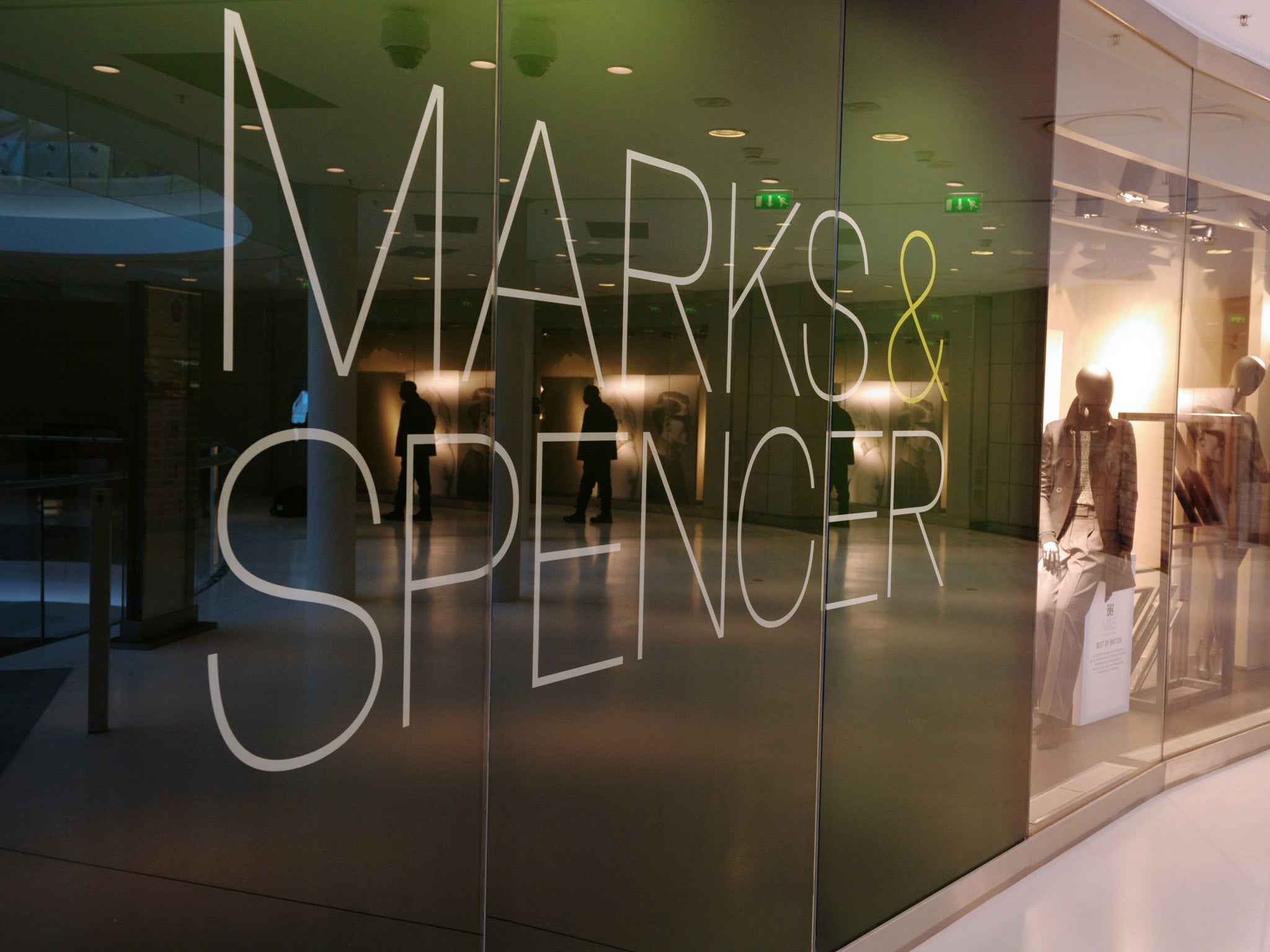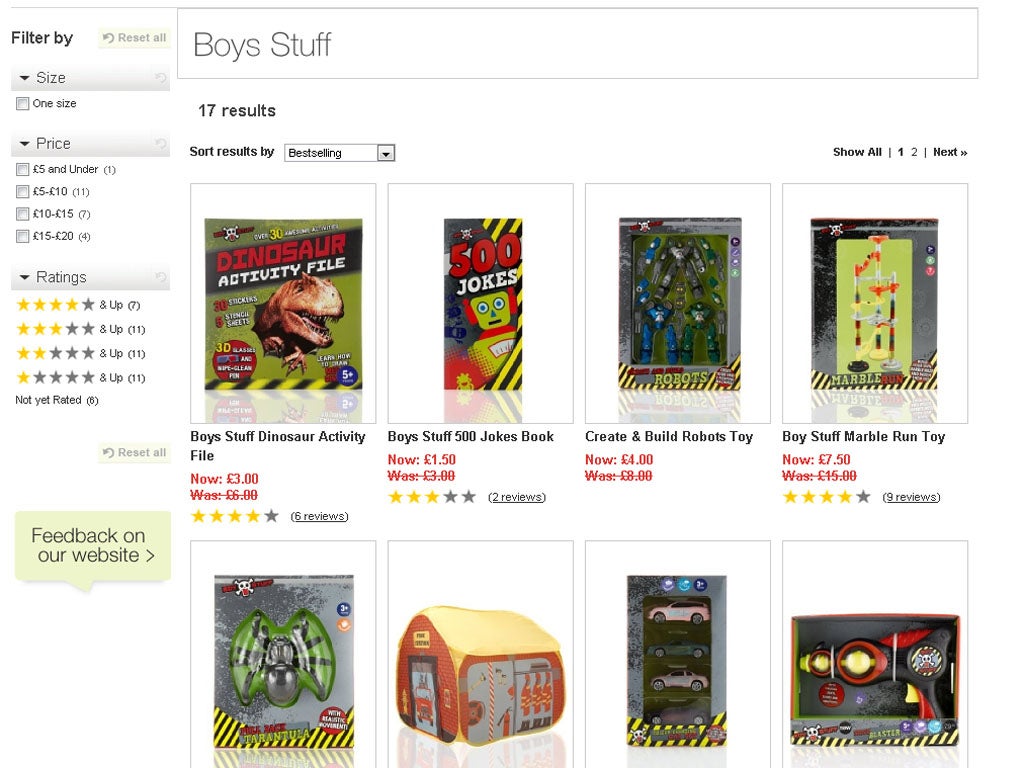I owed it to myself, and my daughter, to put M&S right on the toys it sells
The retailer has pledged to market all its toys as gender-neutral


Peppa Pig is history. Our three-year-old daughter’s new obsession is the CBeebies programme Topsy and Tim, a re-make of the popular children’s books from the 1960s and 1970s about a twin sister and brother. Her favourite episode is called “Marble Run”, in which Topsy and her female friend, annoyed at Tim and his playmate Tony hogging all the marbles and plastic chutes, outsmart them by making their own contraption out of toilet roll holders.
On Monday evening, then, when I spotted a marble run toy on Marks and Spencer’s website, I decided to buy it for our daughter for Christmas. But just as I was about to click “Add to basket”, I noticed its full title was “Boy Stuff Marble Run Toy”. Since when were marbles only for boys? The packaging was in neutral colours – yellow, black and green – but on the corner of the box was a skull and crossbones with the slogan “Boy Stuff” slapped across it. Worse, there was a whole range of “Boy Stuff” including a “Dinosaur Activity File” – which presumably features a list of M&S executives – and a “Boy Stuff 500 Jokes Book”. Is this because M&S thinks little girls can’t tell jokes? Or do they believe that they can make up their own stand-up routine?
There was also a parallel range for girls called “Little Miss Arty”, based on fairies, princesses and handbags. If our child were a little bit older, she would be able to read the word “boy” on her marble run box, and think this toy is not for her. Your domain is only princesses now, she would be told – despite her loving dinosaurs and marbles. It is quite extraordinary that M&S, probably the most prominent retailer in Britain, thinks it is perfectly normal for toys to be segregated along gender lines.
Enraged, I tweeted a link to the “Boy Stuff” range late on Monday, and it was taken up by the Labour MP Stella Creasy and the campaigners Let Toys Be Toys and Everyday Sexism. By Tuesday morning, after being inundated with complaints on Twitter, M&S responded by pledging that all their toys will be “gender neutral” by spring 2014 – a decision apparently made earlier this year but not made public until this week.

In fact, when I checked yesterday the retailer has taken swifter action and already ended its gender segregation: on its website the label “Boy Stuff” has been replaced by “Kids’ Stuff”. This is a victory, but everywhere you look, retailers continue to think that girls want handbags and boys want trains. John Lewis has a girls range featuring jewellery kits; its boys range is all Batman and Star Wars. Campaigners like Let Toys Be Toys and Pink Stinks say that in the 1970s (when I was growing up), shops did not offer such gender-stereotyped toys. There were Sindy dolls in my toy box, but also Lego and marbles.
The announcement by M&S has triggered a backlash; it’s accused of being “cowards” for “caving in to the PC brigade”. But try telling a little girl that some toys are out of bounds for her. By the age of five or six, children are very aware of labels: stick the words “boy stuff” on a box and a girl won’t play with it. And this matters in later life: giving a girl a chemistry set at seven will give her more confidence to study science at school.
For now, our daughter is blissfully unaware of how the world expects her to be: she refuses to wear a dress, and a doll dressed in pink sits at the end of her bed, ignored. I ordered the M&S “Boy Stuff Marble Run Toy” anyway, as a small act of defiance. I predict she will play with it for hours on end – once I get rid of the packaging.
So am I OK to have a Christmas drink?
There were figures from the Office for National Statistics this week showing that women over 65 are drinking more often than those of a younger generation. One in seven women have alcohol at least five days a week, while just 2 per cent of women aged 16 to 24 say they have this much.
Alcohol-related illnesses cost the NHS £3.5bn a year, while 8 per cent of all hospital admissions are linked to drinking. Perhaps the generational shift shows how the over-65s prefer to spread out their alcohol intake, maybe one glass of wine a night, while younger people concentrate their drinking in one night – what the ONS calls “HDD” or “heavy drinking day”. But drill down into the figures, and the picture is more encouraging: 48 per cent of women say they had no alcohol in the week before responding to the questionnaire, a figure which has risen from 43 per cent in the past year. Time to feel less guilty about that Christmas sherry.
Join our commenting forum
Join thought-provoking conversations, follow other Independent readers and see their replies
Comments